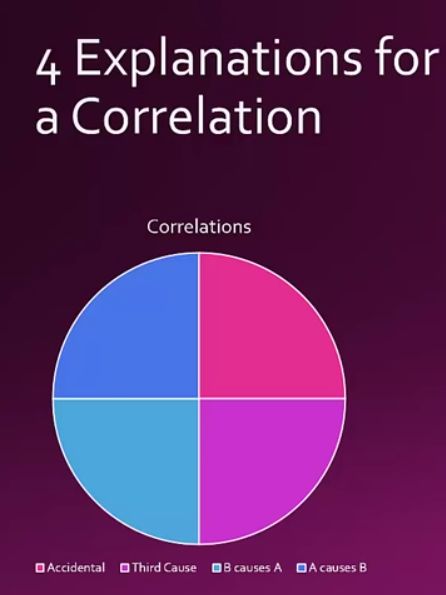What Is the Difference between Correlation and Causation?
|
Picture used with permission of Prof. Matt McCormick, Dept. of Philosophy at Cal. State U. in Sacramento. |
The 4 explanations for a correlation are:
|
"In a given study, if chance, bias, and confounding are all determined to be unlikely alternative explanations of the findings, we can then conclude that a valid statistical association exists between the exposure and disease in these data. It is then necessary to consider whether this relationship can be judged one of cause and effect, since the presence of a valid statistical association in no way implies causality. Such a judgment can only be made in the context of all evidence available at that moment and as such must be reevaluated with each new finding. There are positive criteria that can aid in the judgment concerning causality, including strength of the association, biologic credibility of the hypothesis, consistency of the findings, as well as other information concerning the temporal sequence and the presence of a dose-response relationship." [Hennekens, Epidemiology in Medicine, p. 39]
"Since epidemiology is by its nature inexact, and it is never possible to achieve the degree of control possible in a laboratory, perhaps the most persuasive evidence to support a judgment of a cause-effect relationship arises when a number of studies, conducted by different investigators at various times using alternative methodology in a variety of geographic or cultural settings and among different populations, all show similar results." [Hennekens, Epidemiology in Medicine, p. 41]
Revised: May 30, 2018
